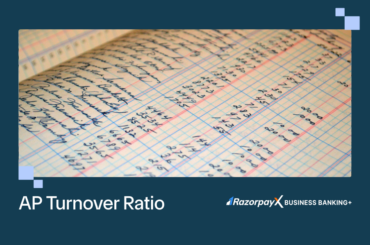Table of Contents
What is Cash Management?
Cash management is the process of monitoring, analysing, and controlling cash flow. The aim of cash management is to ensure that the entity has enough cash to meet all obligations.
Cash management for businesses involves optimizing cash and other liquid assets, investing in the right channels and minimizing operational and overhead costs.
It is multidimensional and complex, involving multiple stakeholders, timelines and large amounts of money. Today, with solutions like RazorpayX Business Banking+, businesses can harness the power of automation and technology to make cash management efficient and accurate.
Effective cash management is crucial for businesses as it ensures sufficient liquidity to meet daily operational needs, pay bills, and invest in growth opportunities.
Ensuring sound cash management practices is the best way to ensure financial stability and make strategic decisions for growth. Fintech solutions today have automated, tech-first offerings that make banking for businesses easier than ever.
RazorpayX offers modern-age banking solutions to entrepreneurs for better financial management. Current accounts powered by RazorpayX are designed with a smart dashboard, offering a clear picture of the cash inflows and outflows.
Cash Management Services
Cash management services are financial products and solutions offered by banks and financial institutions designed to streamline a business’s handling of its day-to-day finances. These services focus on helping businesses improve cash flow, ensuring there’s enough money to cover expenses while maximizing any excess funds.
By utilizing tools like automated collections and disbursements, businesses improve efficiency and free up valuable time for other tasks. Overall, cash management services aim to give companies better returns by optimising available cash and investing excess cash for better returns.
Advantages of Cash Management Services
Cash management services offer a range of advantages for both businesses and individuals. Here are some key benefits to consider:
- Data-driven forecasting and planning: With robust cash management, businesses can make highly accurate predictions on future expenses and profits and make plans accordingly.
-
Enhanced Control and Visibility: Cash management tools give visibility into where money is coming from and going, identify areas for improvement, and make informed decisions about spending and saving.
-
Increased Efficiency and Reduced Risk: Automating tasks like bill payments and collections frees up valuable time and minimizes human error.
-
Improved Liquidity: Cash management helps ensure you have enough readily available cash to cover expenses and seize opportunities.
-
Lowered Risk: By streamlining processes and potentially reducing reliance on physical cash handling, cash management services can lead to cost savings.
-
Simplified Compliance: Cash management services can offer tools and reports that simplify the process of adhering to financial regulations. This can be a significant benefit for businesses that operate in complex regulatory environments.
How Does Cash Management Work?
Cash management is the day-to-day monitoring of inflows and outflows of cash. Cash is one of the most important assets anybody can own, and good management of cash and cash equivalents can significantly improve the liquidity and financial situation of the entity.
Corporate cash management is the management of cash assets for a business. Corporate cash management involves a CFO, finance analysts, business managers, etc. They analyse and track several metrics to ensure the cash management strategy and stability is well-maintained.
Importance of Cash Flow Statement in Cash Flow Management
Cash flow statement is very important in creating a cash flow management plan for businesses. Cash flow statement records all the cash flows of a business, including:
- Cash flow from investing
- Cash flow from financing
- Cash from accounts receivables
- Cash for accounts payables
The bottom line of a cash flow statement shows how much cash the business has. It can be negative if there is more outflow than inflow.
Cash flow statement is a key tool in creating a cash flow management plan since it gives the current cash flow performance of the business as a baseline to improve on.
It is broken into three parts – Investing, Financing and Operating. Investing involves allocating resources to long-term assets and projects that will generate future returns. Financing focuses on obtaining and managing the funds needed to support the company’s operations and growth. Operating pertains to the day-to-day activities required to run the business and generate revenue.
Cash Management Services
Banks and other financial institutions offer cash management services to companies in the form of vendor payments management, payroll management, payouts management, etc.
RazorpayX Business Banking+ helps businesses centralize their cash management by streamlining disbursements, payroll, vendor management etc. RazorpayX’s cash management services help companies optimise their available cash and invest excess cash for better returns.
Here a few of the services RazorpayX Business Banking+ offers:
- Bulk and automated payout management system
- Best in class vendor and invoice management
- Digital-first current account with granular access controls and self-serve approval workflows
- Payroll management system with RazorpayX Payroll
What are the 4 Types of Cash Management?
- Cash Flow from Operating Activities
In this type of cash management, the cash flow statement shows the cash records that come from the regular activities of the business on a day-to-day basis. It excludes cash flows from investing activities.
- Free Cash Flow to Equity
The free cash flow to equity is the cash reserve that is left after the reinvestment of the capital.
- Free Cash Flow to the Company
The free cash flow to a company is the amount of cash derived from operations and is calculated after the payment of depreciation, expenses, and taxes. This is primarily used for financial valuation and determines a company’s profitability.
- Net Change in Cash
This shows the overall change in cash flow from one accounting year to another.
What are the Functions of Cash Management?
- Inventory Management
Inventory management ensures to clear the blockage of any trapped sales which leads to the higher stock-in-hand. As increased stocks in inventory indicate decreased levels of liquidity, by effective fund management, companies can aim to clear out existing stocks which will ensure inflows of cash.
- Receivables Management
Generally, after a credit sale, a company records an entry of sale; however, the payment of the same is often in the pending status. Cash management plays the function of effectively paying all the bills receivables to remove any shortage of liquid cash.
- Payables Management
Payables are the company’s liability when purchasing any items on credit. Sometimes organisations obtain loads from lending institutions or banks and are liable to repay within a stipulated time. Hence, effective fund management ensures that the repayment is made on time, avoiding any penalties or compensatory interest.
- Short-Term Investment
The primary essence of cash management revolves around factors like avoidance of cash crunch and insolvency. Moreover, this can also be used to invest in shorter-term instruments like government securities to increase the value of money.
What are the Objectives of Cash Management?
- Cash Flow Management
The primary objective of cash management is controlling cash inflows and outflows. Most importantly, this approach ensures a lower fund outflow and enhances inflow, promoting an optimistic financial position of a company. Cash management identifies all the sources of cash outflows and adopts measures to restrict them; thereby reducing operational expenses.
- Effective Planning of Future Funds
It optimises cash in a way that makes future cash reserves meet short-term obligations. This also assists in planning better capital expenditure and assessing financial ratios of debt and equity. In other words, with effective planning the company will also have sufficient reserves of liquid cash for catering to any unforeseen expenses.
- Meet the Requirement of Unexpected Expenses
One of the primary objectives of keeping enough liquid cash through effective cash management is catering to unexpected expenses. This may include the breakdown of machinery or any other uncalled occurrence for which the company should not fall out of surplus cash.
- Avoid Insolvency
Ineffective cash management may result in a shortage of funds which may result in failure in bill payment. This, in turn, may lead to insolvency and demolish the goodwill of that organisation.
7 Ways to Improve Cash Management
- Lower the credit period by managing receivables through optimization of the billing and collection process.
- Enhance the cash inflows by entering into lucrative negotiations with the suppliers.
- Curtail traditional payment processes and incorporate different online payment systems.
- Carry periodic reviews and update cash management processes and policies to ensure their effectiveness.
- Schedule regular auditing of cash management to allocate areas of improvement and adhere to all the necessary compliances.
- Reduce cash outflows by locating unnecessary expenses and monitoring them.
- Incorporate better cash management tactics to make the cash balances and transactions visible.
Top 5 Cash Management Strategies
- Budgeting and Forecasting
Budgeting and forecasting is a cash management strategy where a company forecasts the different sources of cash inflows. Based on this forecasting the accounts department creates a budget which is used to manage operations and meet any potential shortfalls.
- Negotiating Favourable Terms of Payment
During entering into a contract, the business needs to negotiate terms of payment for better management of cash flows into the company. Moreover, establishing proper strategies like if customers make an early payment, they will get some percentage of discounts.
- Establishing Better Collection and Billing Methods
Incorporating the best collection and billing method in a company is an optimistic way of cash management. Simpler and hassle-free processes like online payment gateways will be incorporated, which will lead to ease in paying the credit.
- Lowering Expenses
Being one of the most essential cash management strategies, companies need to identify unnecessary expenses and reduce them to conserve cash. For example, implementing different cost-cutting policies and entering into better negotiations with the clients can control expenses to a significant level.
- Keeping Sufficient Cash Reserves
Maintaining an additional stash of sufficient cash can save you from unexpected expenses and emergencies. Moreover, these cash reserves can be used for the compensation needed to pay for any unfortunate events.
Important Terms in Cash Management
Here’s a list of important terms in Cash Management:
- Cash Flow: The movement of cash in and out of a business.
- Cash Flow Statement: A financial document that details the cash flow from operating, investing, and financing activities.
- Accounts Receivable (AR): Money owed by customers for goods or services purchased on credit.
- Accounts Payable (AP): Money owed to suppliers for goods or services purchased on credit.
- Working Capital: A measure of a company’s short-term financial health, calculated as current assets minus current liabilities.
- Current ratio: The current ratio is a liquidity ratio that measures a company’s ability to pay off its short-term obligations with its current assets.
- Quick ratio: Measure of short-term liquidity that focuses on a company’s ability to use its most liquid assets to cover its current liabilities.
- Collection Process: The system for collecting payments from customers on outstanding invoices.
- Disbursement: The act of paying out cash for expenses or other obligations.
- Cash Forecasting: The process of predicting future cash inflows and outflows.
Liked our content? You’ll like our banking solutions a whole lot more.
FAQs
What is the difference between bookkeeping and cash management?
Bookkeeping involves systematic records of financial transactions of a company under different classes. Whereas, cash management only deals with the identification of cash inflows and outflows of a company for a specific accounting period and incorporating strategies for better utilisation of cash.
What is the effect of cash management on working capital?
Any movement in working capital has a direct impact on the cash management of a company. This is because the entry of working capital appears in the cash flow statement. Working capital is the difference between current assets and current liabilities.
What is the importance of cash management?
Cash management is quintessential to maintain the solvency of a company and ensure that the firm never runs out of cash due and can meet any unexpected expenses. Moreover, this approach helps the company to understand the pattern of fund inflows and outflows.
What is a cash management system?
A cash management system is a tool or set of tools that helps businesses track, manage, and optimize their cash flow. It's like a financial control center for your business's cash.
What are the components of a cash management system?
A cash management system combines three key elements to oversee your business's financial health. First, it uses robust software to automate tasks, generate reports, and provide insights. This software connects to secure banking systems for transactions and data storage. Finally, well-defined processes ensure everything runs smoothly, with internal controls to prevent errors and fraud.
What is an example of cash management?
Let's say you run a small bakery. To manage your cash flow effectively, you decide to track your income and expenses daily in a spreadsheet. This allows you to see how much money you have coming in from sales (income) and how much you're spending on ingredients, rent, and other costs (expenses). By monitoring your cash flow, you can identify any potential shortfalls and take action, such as delaying an equipment purchase or offering an early-payment discount to customers, to ensure you have enough cash on hand to cover your obligations.





